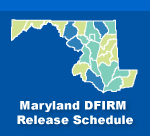
FAQs
What is a FIRM?
A community’s flood risk is assessed by a FEMA Flood Insurance Study, which takes into consideration river flow, storm tides, rainfall, and coastal storm surge, among other factors. This information is used to create Flood Insurance Rate Maps (FIRMs), maps created by the NFIP for floodplain management and insurance purposes. A FIRM will generally show a community's base flood elevations, flood zones, and floodplain boundaries. As a property owner/renter, you can use this map to get a reliable indication of what flood zone you're in.
What is a DFIRM?
Flood risk can change over time due to many causes, including changing weather patterns, environmental changes, and new development. Therefore, FIRMs need to be updated to reflect those changes. FEMA is currently updating flood maps nationwide and is introducing new Digital FIRMs (DFIRMs). These new digital maps will show flood risk at a property-by-property level and will be accessible online.
What is considered a flood?
For purposes of the National Flood Insurance Program (NFIP), a flood is an unusual rise in waters covering two acres or more of land or two or more properties. In this case, streets are included in the definition of property.
What is the 100-year floodplain?
The 100-year flood is calculated to be the level of flood water expected to be equaled or exceeded every 100 years on average. The 100-year flood can also be referred to as the 1 percent flood, since it is a flood that has a 1 percent chance of being equaled or exceeded in any single year. This expected flood water level is taken into consideration when developing flood maps.
I’m not sure if I have flood insurance. How can I find out?
Homeowners insurance does not cover flood damage; therefore, flood insurance would have been purchased as a separate policy. If you’re still not sure if you have it, contact your insurance agent to inquire about your coverage.
What is covered by flood insurance?
Buildings and contents are typically covered; however, separate policies are required for high-risk flood areas. For residential buildings, maximum coverage is $250,000 for the structure and $100,000 for its contents.
How much does flood insurance cost?
Flood insurance can cost as low as $129 per year for a Preferred Risk Policy, available in medium- to low-risk areas, depending on the level of coverage chosen. Rates are based on the level of flood risk posed to the property.
Am I required to purchase flood insurance?
If your home is in a high-risk flood area and you have obtained a mortgage through a federally-regulated or insured lender, you are required to purchase flood insurance.
I don’t live in a high-risk area. Why do I need flood insurance?
All areas are susceptible to flooding to varying degrees. If you live in a moderate- to low -risk flood area, it is advisable to have flood insurance. Between 20 and 25 percent of the NFIP’s claims come from outside high-risk flood areas.
I live in a low-risk area. Will I pay the same rates as those in a high-risk area?
Property owners in moderate- to low-risk areas should ask their insurance agents if they are eligible for the Preferred Risk Policy, which provides inexpensive flood insurance protection.
If I live in the floodplain, will I be able to get flood insurance?
Everyone living in a NFIP-participating community can receive affordable NFIP flood insurance, whether they live inside or outside the designated floodplain.
I already have homeowners insurance. Do I need flood insurance, too?
Homeowners insurance does not cover flood damages. A house has a 26 percent chance of flooding during a 30-year mortgage period, versus only a 4 percent chance of catching on fire.
Can “grandfathering” save me money?
As a result of the change from Flood Insurance Rate Maps (FIRMs) to updated Digital FIRMs (DFIRMs), your property may change from low-risk to high-risk. Therefore, you will likely be required to protect your building and its contents with flood insurance—-even if you don't have a mortgage, and received Federal financial assistance following a Presidentially declared disaster. Flood insurance rates for high-risk areas are higher, but it’s possible to save money with the NFIP Grandfather Rule. Visit floodsmart.gov for more information.
To take advantage of grandfathering, obtain a flood insurance policy before the new maps take effect. You’ll likely qualify for a Preferred Risk Policy. On renewal, you will qualify for the standard rates associated with moderate-to-low risk zones, rather than high-risk zones, and this could add up to significant savings. To lock in the lower rate, act now. You must purchase flood insurance before the new maps become effective; otherwise, the property will be rated using the high-risk flood zone on the new DFIRM. Visit floodsmart.gov for more information.
What if my property is currently mapped as high-risk, but is downgraded to moderate- or low risk?
If you have a federally-backed loan, it’s possible that your lender may no longer require you to carry flood insurance. However, that doesn’t mean you no longer have a risk of flooding. In fact, one out of every four flood claims come from these lower-risk areas.
The NFIP has created an easy way to convert your policy to a lower-cost Preferred Risk Policy. You can receive a refund for the difference paid from your existing policy without a lapse in coverage. Ask your insurance agent for more details.
Where can I find additional information?
If you have additional questions or are a renter or condo owner looking for answers to specific questions, we encourage you to visit www.FloodSmart.gov, the official Web site of the NFIP.
Preliminary Schedule
- St. Mary's County - November 2022: Riverine
- Montgomery County - July 31, 2023: Riverine
- Howard County - August 2025: Riverine
Effective Schedule
- Frederick County - August 2023: Riverine (completed)
- Baltimore County - November 2023: Riverine
- St. Mary's County - May 2025: Riverine
- Montgomery County - Spring 2026: Riverine





